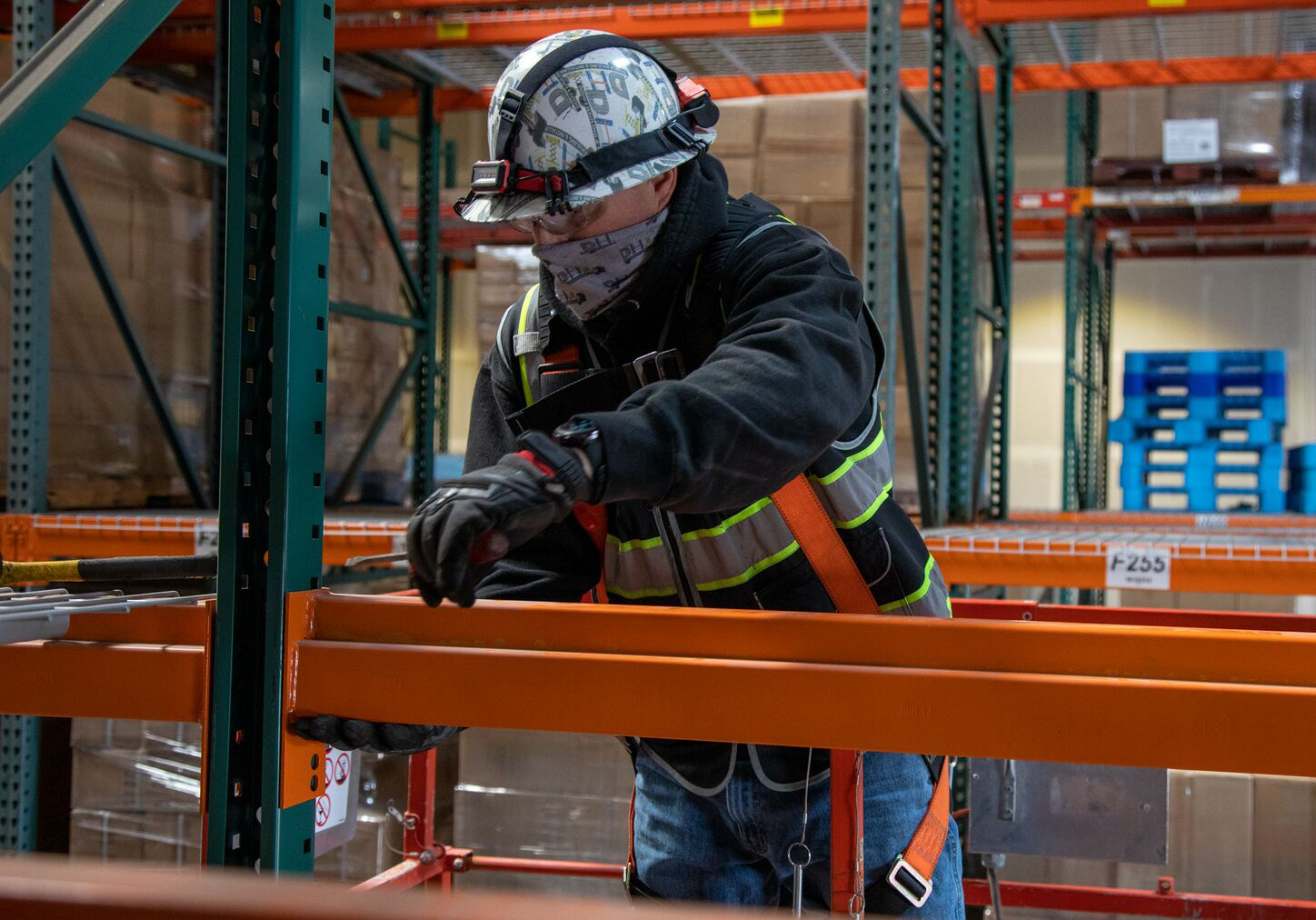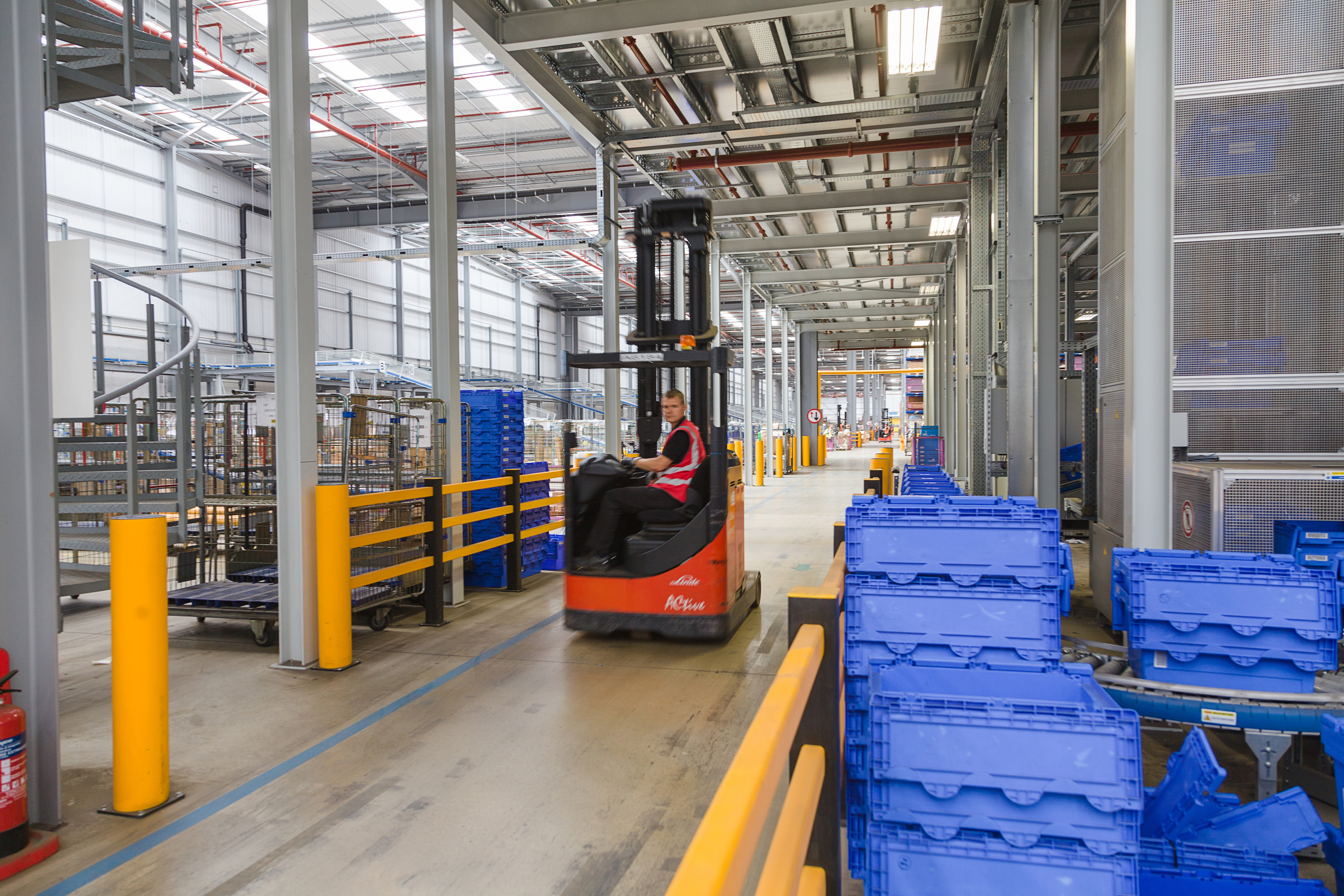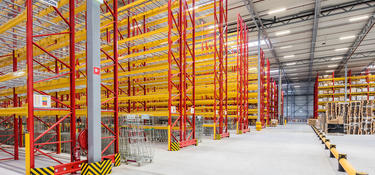
The design of your warehouse and its flow of materials shape operational efficiency. Most warehouses fail to take an integrated approach during the design phase. Various components—such as racking, forklifts, IT infrastructure and automation solutions—are often installed separately, which can lead to operational problems over time. Systems that fail to work together result in inefficiencies, bottlenecks, and subpar customer and worker experiences. An integrated approach to warehouse design, on the other hand, allows businesses to unlock the full potential of their operations with a turnkey-ready facility focused on performance and value.
If you plan to redesign your warehouse or construct, lease or purchase a new facility, it's essential to understand the advantages of an integrated warehouse design to gain optimal operational efficiency. We offer an inside look at what integrated warehouse design entails and why it’s central to the success.
What Is Integrated Warehouse Design?
An integrated warehouse design enhances the flow of goods and reduces the time it takes to process orders. With an optimized layout and infrastructure aligned to meet a business’ specific operational needs, integrated warehouse design can revolutionize inventory organization and retrieval, ensuring swift and accurate fulfillment.
A well-crafted integrated design creates an ecosystem that benefits all key stakeholders. For business owners, integrated warehouse design improves efficiency and reduces costs. For warehouse employees, integrated warehouse design enables them to perform their roles more easily and quickly. Integration provides clear paths for movement, lowers the probability of workplace accidents, and reduces the time spent locating and retrieving inventory. Operate your warehouse with strategic integration throughout, and you’ll find the movement of people and goods will be complemented by the technical backend components, culminating in an output that outperforms the individual elements.
The nuances of order fulfillment are important. Examples of often-overlooked components of inventory storage and order fulfillment centers include:
- Selecting optimal warehouse racking that’s customized for operational needs.
- Deploying logistics operations IT systems that track and manage inventory.
- Aligning forklift equipment with warehouse racking for optimal space utilization.
- Integrating automation technologies strategically.
Choose the Right Racking and Layout

While many business owners and warehouse managers are aware of the impact on efficiency and organization, budget constraints often hinder the selection of quality warehouse racking. While racking systems can be a significant investment, they affect the entire performance of a warehouse. The challenge is to balance the cost of an optimized racking system with the potential gains.
The right warehouse racking solution provides both utility and accessibility. Optimal racking will reduce lead times and improve operational efficiency. And quality warehouse racking solutions offer customization to meet fluctuating customer demands and accommodate businesses across a spectrum of sizes and with varying growth rates.
By selecting the right warehouse racking solution, including modular shelves and integrated mezzanine systems for high-turn items, businesses can align their storage infrastructure to their specific operational needs.
Optimize IT Systems for Logistics Operations
Information technology is central to logistics. The optimal IT system will boost a company’s logistics operations with orderly item storage, prompt order fulfillment and satisfied customers.
The IT system in a warehouse is the brains behind the operations, a key role in efficient logistical processes. IT systems permit the real-time exchange of pertinent information between your business, merchants, customers and other relevant parties. This communication creates a delivery network for optimal product distribution that saves time and maximizes cost efficiency. Choose your IT system wisely, and it will process the information necessary for a supply chain and delivery network that distributes products with unparalleled efficiency.
One of the most important advantages of an integrated approach to warehouse IT systems is wireless speed. Racking systems tend to interfere with signal strength, but tailoring the layout of a racking system in sync with the wireless network and access points mitigates the issue, paving the way for seamless wireless coverage throughout a warehouse.

Align Forklifts With Racking
Integrating forklifts with racking is key because how forklifts function with racking systems determines warehouse efficiency. The most successful warehouse operations look beyond the basic operation of these machines: These businesses meticulously integrate forklifts with the racking systems to maximize space utilization and streamline workflows.
This emphasis on alignment is particularly advantageous in warehouses with a narrow-aisle layout. With this spatial configuration, warehouses can achieve a remarkable increase in storage capacity of up to 30%. For further flexibility, a forklift rental program reduces lead times and allows businesses to operate fluidly through ebbs and peak seasons throughout the year without the long-term commitment to a forklift fleet.
The combined result of customized racking systems, integrated IT infrastructure and the right forklifts is a cohesive ecosystem that optimizes operations and delivers unmatched performance in logistics.
The Role of Automation Systems in Warehouse Operations
Technology has advanced to a point where all elements of warehouse operations—from racking and forklifts to IT infrastructure and automation—now communicate with one another. The most efficient warehouses are characterized by strategic integration of automation technologies. An interconnected system offers significant benefits and optimized operations.
Warehouse automation is important for employee safety because machines perform heavy lifts and other ergonomically rigorous work that is otherwise burdensome to employees. With the automation of repetitive and physically demanding tasks, a work environment is less physically taxing and safer for warehouse employees. It no longer makes sense for employees to carry onerous loads when wearable lift-assist robots are available.
At the same time, warehouse automation solutions enhance productivity. Some solutions, such as vertical lift modules, increase available floor space while optimizing the positioning of tray height. This type of high-density storage optimizes workforce efficiency.
Autonomous mobile robots take worker productivity to the next level in a warehouse, and robotic automation is highly scalable and adaptable. Order fulfillment and interactive inventory management also help control stock levels to reduce mistakes during picking operations. Workplace automation via autonomous robotics is beneficial for reasons beyond ergonomic comfort and increased productivity. Corporations of all types and sizes embrace automated solutions in warehouse settings as they seek to reduce the mundane aspect of work for employees, boost retention and make workplace culture more enjoyable.
Explore the automated solutions available for warehouses, such as autonomous mobile robotics (AMRs) and conveyor belts that use sensors and machine vision to complete tasks with minimal human oversight.
Explore Prologis Operations Essentials Today
If you own a warehouse, manage a warehouse, or are interested in warehouse rentals or construction, Prologis Operation Essentials offers many benefits. Our Essentials platform makes it easier to organize inventory, process orders efficiently and keep you moving at the speed of your business.
From singular products to end-to-end solutions, our comprehensive offerings for warehouses drive success at scale. Meet your operational objectives with turnkey move-in, renewal and optimization solutions, including strategic systems analysis and roadmap consultation, IT and network infrastructure consulting, fleet performance evaluation and more.
Reach out to our team today to learn how we maximize customer retention and help your business fulfill its potential.


